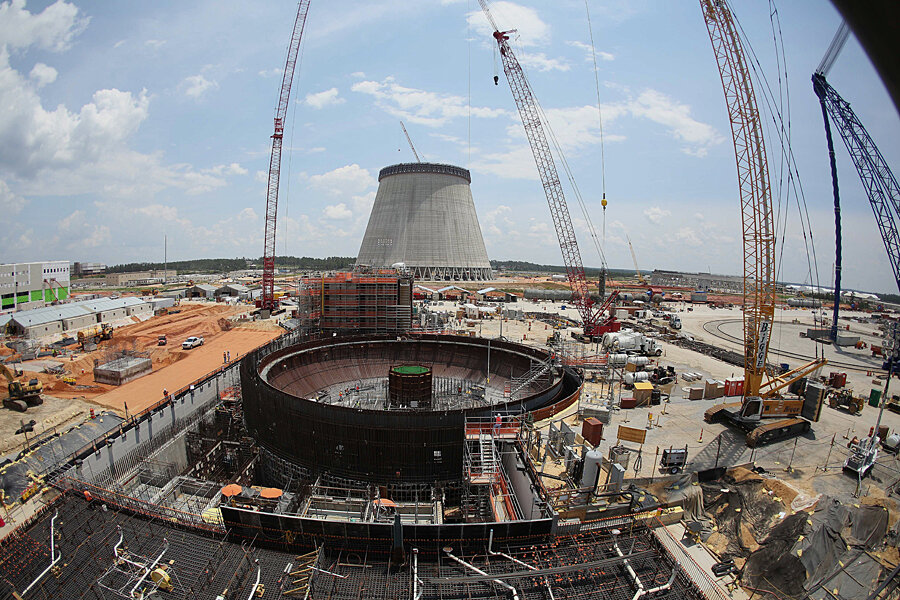Want to fight climate change? Build more nuclear power.
Loading...
The floundering U.S. nuclear industry just got a bit of good news: Utah is considering building two new nuclear reactors.
Blue Castle Holdings Inc. has signed a memorandum of understanding with Westinghouse that could eventually lead to the construction of two AP1000 nuclear reactors. The two reactors have an estimated cost of $10 billion and an estimated operational date of 2024.
If constructed, Blue Castle says the reactors will increase Utah’s electricity generation capacity by 50 percent, which would replace the power lost with the retirement of a few coal plants in the state.
The announcement is important because building new nuclear reactors in the United States has been a struggle, to say the least. There are five other reactors under construction – two in South Carolina, two in Georgia, and one in Tennessee. All have suffered delays and unexpected cost increases.
Demonstrating the ability to build new advanced nuclear reactors like the AP1000 is critical for the industry’s long-term health. But it is also important for the U.S. as a whole because nuclear power is the largest source of carbon-free electricity in the country.
And unless the nuclear industry can deploy more reactors, greenhouse gas emissions will rise as natural gas replaces some lost nuclear capacity. Consider this: there are 100 nuclear reactors currently in operation in the United States, and 95 of them are more than 25 years old. More than half are approaching the end of their original 40-year licenses, although many are being extended for another 20 years.
Still, the U.S. is going to have to figure out a way to replace around 100 gigawatts of nuclear generation by 2050. As it stands, only 5.6 gigawatts are slated to be completed before 2030, with perhaps another 2 gigawatts if the Utah plants move forward.
Unless the nuclear industry can pick up the pace in swapping out old reactors for new ones, a massive wave of carbon-free power could be lost over the next several decades.
For sure, much of that will be replaced by renewables, like solar and wind. Renewables are rapidly gaining favor as costs come down, and they will be a driving force in the decades to come. That is the good news.
But meeting certain climate objectives – reducing greenhouse gas emissions by 80 percent by 2050 was a White House goal put forward in 2009 – becomes exceedingly difficult if a substantial portion of American nuclear capacity goes offline.
To put it another way, in order to reduce emissions to the goal level, renewable energy will largely have to replace coal and natural gas over the next several decades, which combined make up two-thirds of the country’s electricity generation. That’s a tall order. But if renewables also have to cover for lost nuclear capacity – an additional one-fifth of total generation – it becomes that much more difficult to achieve. Non-hydro renewables only account for 6 percent of electricity right now.
The problem grows worse when you consider the fact that natural gas is already eating into nuclear’s share. Natural gas saw 6.8 gigawatts of new capacity added in 2013, and has already added another 2.1 gigawattsso far this year. Over the same period, the nuclear industry lost almost 4 gigawatts. The San Onofre reactors were forced to shut down due to safety issues. Wisconsin’s Kewaunee plant shutdown because of its inability to compete with cheap natural gas, and the Vermont Yankee plant is slated to be shuttered at the end of 2014 for the same reason.
That’s not to say that these plants should have remained open. Nobody should be arguing that a plant leaking radioactive water should be kept in operation.
But the trend is clear. Despite the few reactors under construction and the Utah announcement about two additional reactors in the works, many more will be closed. There is just too much fracked gas out there. Unless the industry can turn things around, the U.S. will fail to adequately reduce greenhouse gas emissions in any reasonable timeframe.







